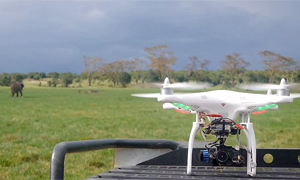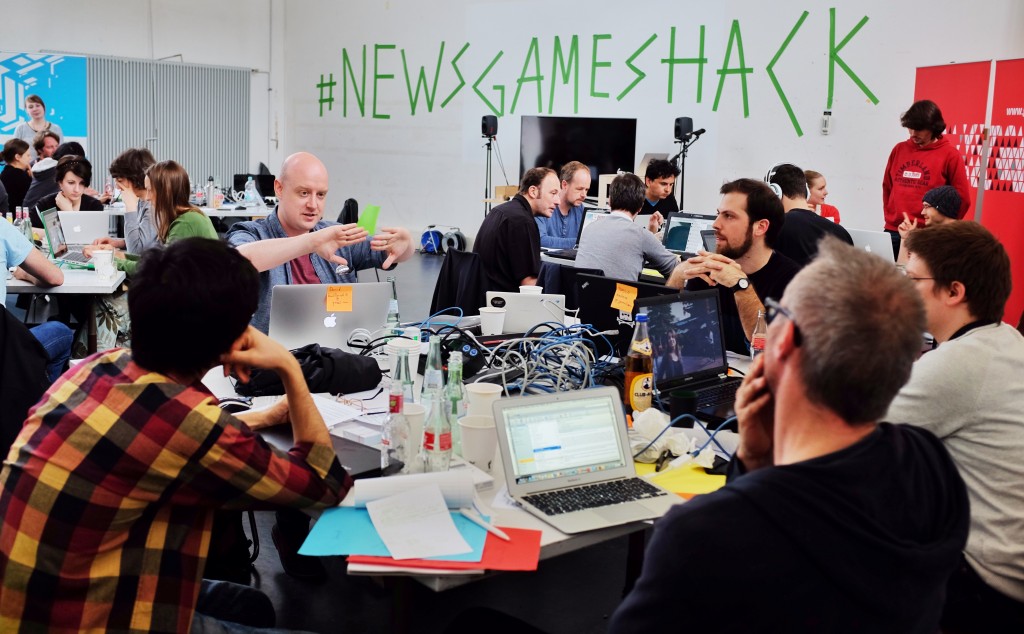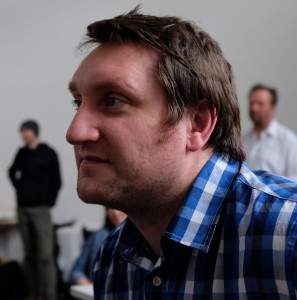A new media model worth watching – The Conversation
![]()
The Conversation is a popular Australian online news site that uses academics to cover breaking news and analyze current debates. The idea behind the model is to team up university researchers, who know a lot about many things but can’t necessarily write for a mainstream audience, with editors, who can. The combination of “academic rigour with journalistic flair” (the site’s slogan) has proved a roaring success and The Conversation now attracts nearly 20 million reads a month.
Largely funded by partner universities, the articles are free to read, there are no limits to the number of articles people can read and there is no advertising. In an interesting twist, articles are also free to republish under a Creative Commons license. And in an era where news organizations are continually slashing budgets and laying off staff, the not-for-profit has managed to export its model beyond Australia’s shores to the United Kingdom and the United States.
OnMedia spoke with The Conversation’s founder, Andrew Jaspan.
![]() read more
read more
12 tips to using digital technology for media and advocacy

African SkyCAM drone
The South2South Media Dialogue recently brought together 14 amazing journalists and activists from Latin America, Asia, the Middle East and Africa who are all working in the trenches – creating new tools and new ways of using technology to increase people’s freedom of information and expression. Their experiences range from mapping Rhino poaching deaths in southern Africa and using the crowd to open up data in Argentina to providing audio news on mobiles in India, conducting investigative journalism in Peru and starting up Palestine’s first hyperlocal news site.
At the four-day event in Cape Town, they talked about their own initiatives and shared many of the pitfalls and possibilities of implementing and running projects which use digital technology. So here’s your chance to learn from them.
![]() read more
read more
Radio Ambulante – a new kind of radio for the Spanish-speaking world
 Bringing powerful audio stories to Spanish speakers across the Americas, that’s the goal of Radio Ambulante. The California-based show is a home for long-form, sound-rich radio features driven by strong characters and compelling voices – a format that is not very common in the Spanish-speaking world.
Bringing powerful audio stories to Spanish speakers across the Americas, that’s the goal of Radio Ambulante. The California-based show is a home for long-form, sound-rich radio features driven by strong characters and compelling voices – a format that is not very common in the Spanish-speaking world.
The show was inspired by a reporting trip novelist Daniel Alarcón made to his native Peru on assignment for the BBC. While investigating migration there, Alarcón travelled across the country recording personal stories from a wide range of people. But when he later heard the final mix, he was disappointed that the producers had largely highlighted the English speakers he talked to, leaving out much of the compelling material in Spanish. He wondered what the result would be if there was a place where Spanish-language voices could be heard.
In 2012, with the help of a successful Kickstarter campaign, Radio Ambulante was born. Programs have featured a transgender Nicaraguan woman living with her wife in San Francisco, a Peruvian stowaway describing his frightening journey to New York, and an Argentine who was jailed during that country’s dictatorship and given the choice to either work or to die. “Ambulante” can mean traveling or itinerant but also refers to “ambulantes”: street vendors who sell all kinds of wares in many Latin American cities.
While Radio Ambulante has a growing list of terrestrial stations that carry it, the show is largely distributed digitally. In early October, Radio Ambulante was awarded the Gabriel García Márquez Journalism Award in the innovation category. onMedia put a few questions to Radio Ambulante’s co-founder and executive director, Carolina Guerrero, about how the show’s format has been received in Latin America and where the show wants to go to from here.
![]() read more
read more
Ambitious journalism projects ask public for start-up cash
Several digital news projects in Europe have received a lot of attention over the past year due to their innovative funding method. They didn’t have a big publisher financing their start-up costs, but went directly to their potential audience and raised millions for their platforms. This kind of crowdfunding might be a model for others to follow, especially as other revenue streams slow to a trickle.
The drumbeat of depressing news about print publishing’s decline has been with us for so long now that it’s now part of the general background noise. But digital sites, even the big ones, are also hurting as online ad revenues have slumped. More and more are abandoning the “it’s free on the internet” philosophy and setting up paywalls, with some success.
But what about the new kids on the block? Those start-ups might have the drive and ideas, but aren’t the New York Times, which has enough clout to convince people to pay to access unlimited content.
Two European newcomers think they might have found a solution. Within a year, a Dutch online news platform called De Correspondent, and a similar German project, Krautreporter, managed to raise millions of dollars through crowdfunding campaigns. They wanted to launch sites following a new business model, and in a sense, to remake online journalism. In fact, Krautreporter declared on its blog: “Online journalism is broken. We can fix that.”
![]() read more
read more
Creative ways of World Cup storytelling

Photo: J Mark Dodds, (CC BY-NC-ND 2.0)
With such a frenzy around everything related to football and the World Cup in Brazil, media departments are madly experimenting with how they can grab readers’ attention. One thing they are doing is coming up with some stunning ways of telling football stories with numbers. From a slick image of the most popular beer in each World Cup country to a map displaying how comfortable different nationalities are about the idea of a national player coming out as gay, there is literally something out there for everyone.
Every day, our colleagues over at DW Innovation are combing the internet for innovative visualizations, infographics and storytelling all around the 2014 Brazil World Cup. Their collection is in a ScribbleLive document embedded below – this means that you just have to check back to this blog post and it will update automatically with DW Innovation’s daily discoveries.
![]() read more
read more
Ukrainian fact-checking site debunks propaganda
 This photo supposedly shows a smiling Ukrainian eating the arm of a dead Russian. It was published on the Russian news site rusvesna.su on June 6 and has been spreading on social media ever since. In reality, the photo is actually a behind-the-scene’s shot from the making of a 2008 Russian sci-fi movie, “We’re from the future”.
This photo supposedly shows a smiling Ukrainian eating the arm of a dead Russian. It was published on the Russian news site rusvesna.su on June 6 and has been spreading on social media ever since. In reality, the photo is actually a behind-the-scene’s shot from the making of a 2008 Russian sci-fi movie, “We’re from the future”.
It took just a day for the Ukrainian site stopfake.org to published details of the real origin of the photo – one of hundreds of fake reports that the website has debunked since it started in March 2014.
![]() read more
read more
African journalists reach for the sky with drones
 Africa has its first drone journalism team. The possibility of capturing aerial images to illustrate the scale or context of a story, or show a completely different perspective, was the inspiration for launching AfricanSkyCAM.
Africa has its first drone journalism team. The possibility of capturing aerial images to illustrate the scale or context of a story, or show a completely different perspective, was the inspiration for launching AfricanSkyCAM.
Unmanned aerial vehicles (UAV), or drones, are increasingly entering service with media organizations around the world. This is because they’re small and cheap to operate. And they can help to produce shots that manned aircraft, even helicopters, often can not deliver.
 A quadcopter, such as the DJI Phantom series fitted with a lightweight GoPro HD camcorder, can be flying in the air for around 1,000 euro.
A quadcopter, such as the DJI Phantom series fitted with a lightweight GoPro HD camcorder, can be flying in the air for around 1,000 euro.
Kenyan journalist Dickens Onditi Olewe is the founder of AfricanSkyCAM. As the head of the online team at The Star newspaper in Nairobi, he was frustrated seeing journalists send in the same kinds of images of seasonal flooding in Kenya, year in, year out. This spurred him to explore the possibility of using a drone to get better shots, he explains to onMedia.
![]() read more
read more
The big hack: Pushing newsgames further
 Bring programmers, graphic designers and journalists together and give them 48 hours to develop games to help explain, clarify or interpret the news. That was the idea behind the Newsgames Hackathon held in the German city of Cologne this week.
Bring programmers, graphic designers and journalists together and give them 48 hours to develop games to help explain, clarify or interpret the news. That was the idea behind the Newsgames Hackathon held in the German city of Cologne this week.
Journalism orientated hackathons are fast becoming a valuable way of generating new ideas and formats for digital media.
“I always think it’s fantastic that people with different backgrounds work together,” said newsgames hackathon organizer, Marcus Bösch.
Bösch is a journalist and media trainer (he also works for DW Akademie) and is at the forefront of developing news games in Germany, where he co-founded the Good Evil games studio.
“You have a journalist and a programmer and they talk together to solve problems,” Bösch said to onMedia’s Guy Degen at the event, which ran from May 6-7, 2014.
“That’s the way we should work. That’s the only way forward. Otherwise we’ll keep on publishing articles that were made out of a Reuters feed for the next hundred years and that can’t be the future of journalism.”
The newsgames expert Tomas Rawlings was also on hand in Cologne to give advice to the hackers. He’s conscious that news editors often have a strong perception that “games equal fun or equal trivial” or the medium “can’t be used to cover a serious subject”.
Rawlings argues that newsgames should focus on engagement and not necessarily on being fun to play. His gaming studio Auroch Digital has developed successful newsgames that have tackled serious topics such as the civil war in Syria and climate change.
![]() read more
read more
Cambodia sets pace with open data

Photo: flickr/jwyg
Accessing reliable data can be difficult, especially in the developing world. Good data might not exist in the first place, and if it does, it can be hard to come by or deliberately kept under lock and key by the powers-that-be. In Cambodia, an open data site is putting data in the hands of journalists and researchers – in fact, anyone who wants it – in an attempt to shine a light on a whole variety of issues.
![]() read more
read more
Hackdays and digital product managers: a conversation with the Global Editors Network
In order to boost innovation and encourage new strategies about news presentation, the Global Editors Network (GEN) and Russian news agency RIA Novosti held a Hackday on Dec. 10-11 in Moscow. Called “Hack the Newsroom,” the event brought together three-person teams made up of an editor or journalist, a developer and a designer from national and regional Russian media organizations.
It was one of a series of such hackdays held at some of the globe’s leading newsrooms this year. The aim is to help newsrooms develop new approaches to producing and presenting editorial content and think creatively about apps, interactivity, data visualization and newsgaming projects.
“There are a lot of innovations in newsrooms, but they don’t often come from the editorial side,” said Antoine Laurent, GEN’s deputy director. “To deliver innovative content on a regular basis, you need to have a direct connection between the technical and editorial sides. Innovation comes from collaboration.”

The winning project
This time, it was all about big data and data journalism. Participants had to turn open data into compelling stories. As a result, participants came up with projects mostly based on national data.
You can watch the presentation of the final pitches here (in Russian). The winning project was developed by the team from the Moscow-based magazine “Bolshoi Gorod” (“Big City”). They presented an interactive map of Moscow showing where city residents spend their free time based on based on 126,000 of check-ins by users of VK, a popular Russian social networking site.
In this interview, Laurent told onMedia why he thinks data journalism is here to stay, why GEN is holding a series of hackdays and how journalists will need to manage digital content in the future.
![]() read more
read more







 By
By 



Feedback